Totally Shetland.
There's always an element of satisfaction when I get to the end of the month and I can report that's been an entirely Shetland month, and in this case a month spent almost entirely at the south end of Shetland watching auks!
By the Numbers
Reporting Days: 31
Location: Shetland
Distance Walked: 343 km (mostly on the beaches)
Distance Driven: 776 km (mostly shopping trips to Lerwick)
Distance Rowed: 156 km (entirely stationary)
Photographs Taken: Many thousands, mostly auks
Puffins
July is peak puffin at Sumburgh Head - the breeding birds are busy feeding the pufflings, the non-breeding adults are just hanging around on the cliffs and the youngsters (the pufflings) are starting to emerge from their nests. And the photographers and other visitors spend many hours just looking over the walls watching the puffin antics.
 |
| Shout |
 |
| Meeting |
 |
| Pairs |
 |
| Fab Four |
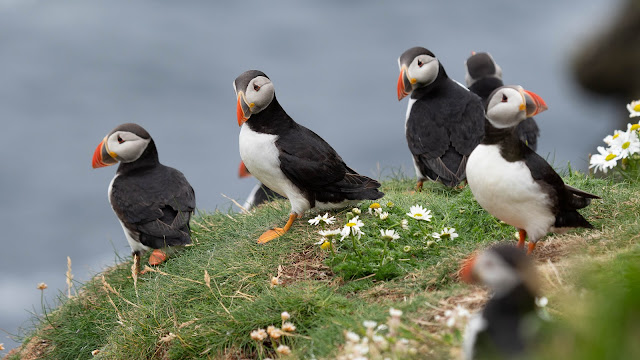 |
| Big Meeting |
 |
| Looking Out |
 |
| Exploring |
Razorbills
If you want a change from the showy bills (and feet) of the puffins, can I suggest that you spend a bit more time watching the razorbills (also available at Sumburgh Head). These are without question (at least I won't consider any question) the coolest auks.
 |
| Razorbill |
 |
| Razorbills with chick |
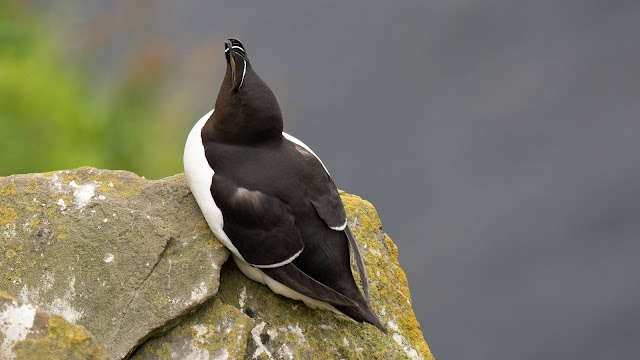 |
| Razorbill |
Tsyties
Black Guillemots (unlike the other local auks) stay around all year but change from their distinctive breeding plumage at the end of the summer. They don't (as far as I know) breed at Sumburgh Head, but do find lots of local nesting holes around the West Voe of Sumburgh and on Scat Ness. And you will (if you've got decent high frequency hearing) almost certainly hear them before you see them.
 |
| Calling |
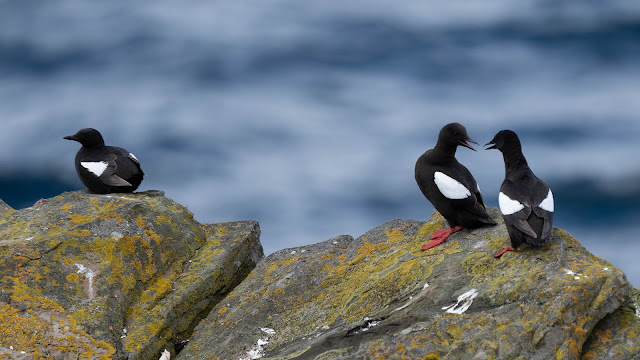 |
| Tystie Dynamics |
Guillemots
Guillemots are probably the most numerous Shetland auk, they 'nest' huddled together in big colonies above the sea on every side of Sumburgh Head. I find it really difficult to get good guillemot pictures, the colonies are quite a distance from the cliff top vantage points and the fact that the birds huddle together so tightly makes it challenging to pick out individuals. Once the youngsters (the jumplings) get a bit bigger the adults give them a wee bit of space and it gets a bit easier to see individual birds.
 |
| Guillemots with jumplings |
 |
| The Last Jumpling |
Beaches
I very rarely go a day on Shetland without a beach walk - and this month I've walked Quendale Beach almost every day!
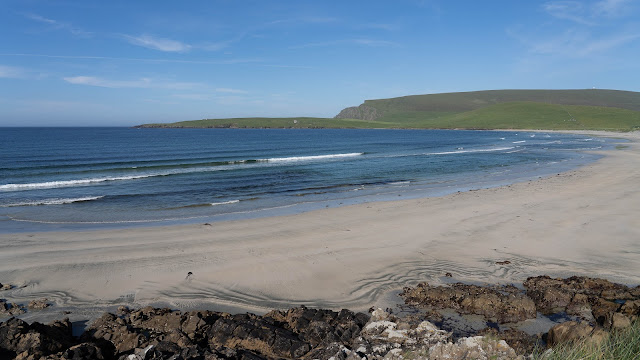 |
| Quendale Beach |
 |
| Last light, Quendale Beach |
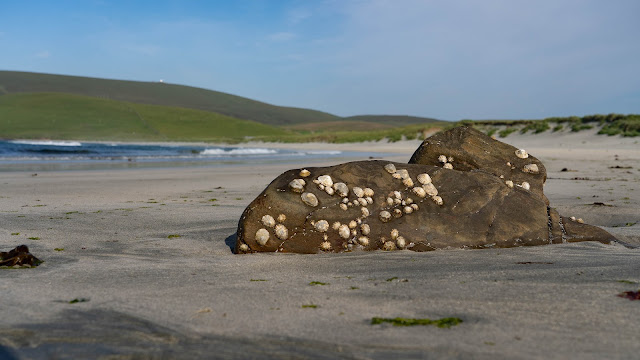 |
| Low tide, Quendale Beach |
Orca
July is also an excellent time for orca spotting around Shetland - and they put in several appearances around the south end of Shetland. Orca sightings can never be guaranteed and should always be treasured!
 |
| 27 Pod passing Sumburgh Head |
 |
| 27 Pod passing Sumburgh Head |
Waves
I think there is a risk that the pictures from this month give a misleading picture of the Shetland weather - the weather has been good but that doesn't mean that there haven't been a few stormy and somewhat bleak days too!
 |
| Scat Ness Waves |
 |
| Scat Ness Bleak |
Next month is likely to feature fewer auks, lots of beaches and almost certainly more waves.